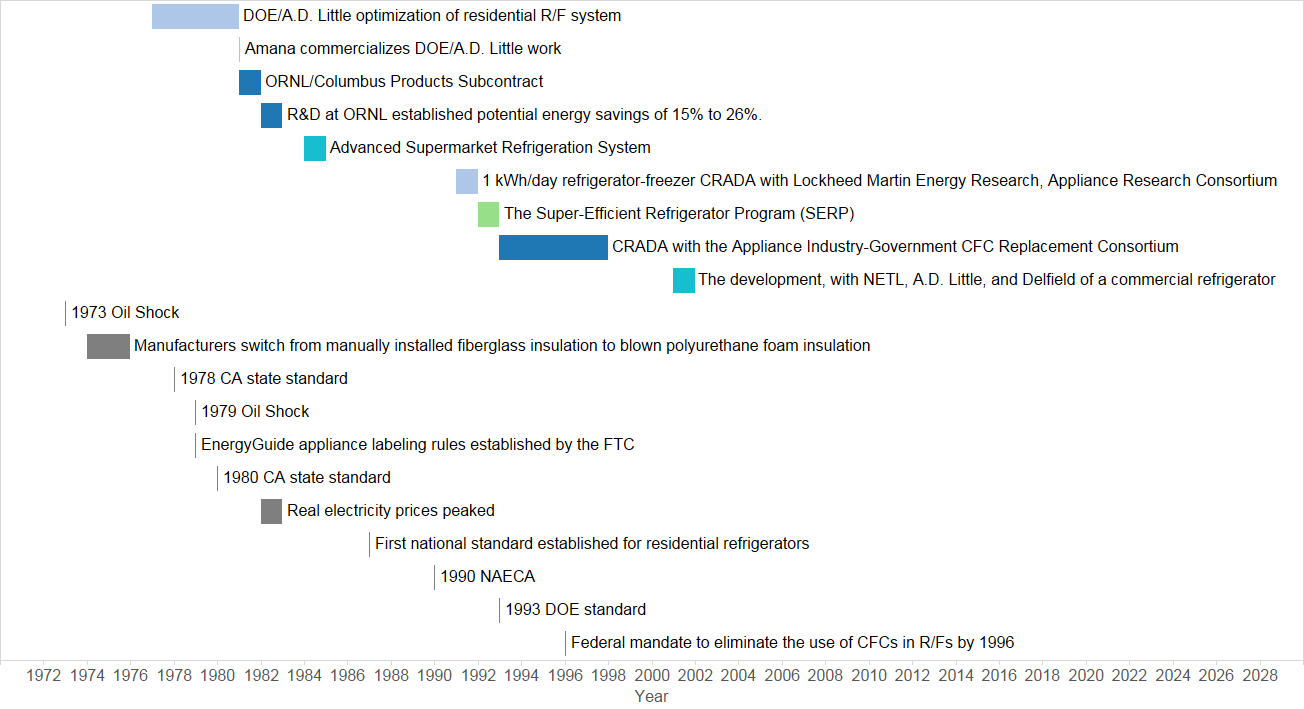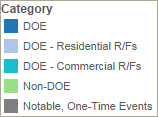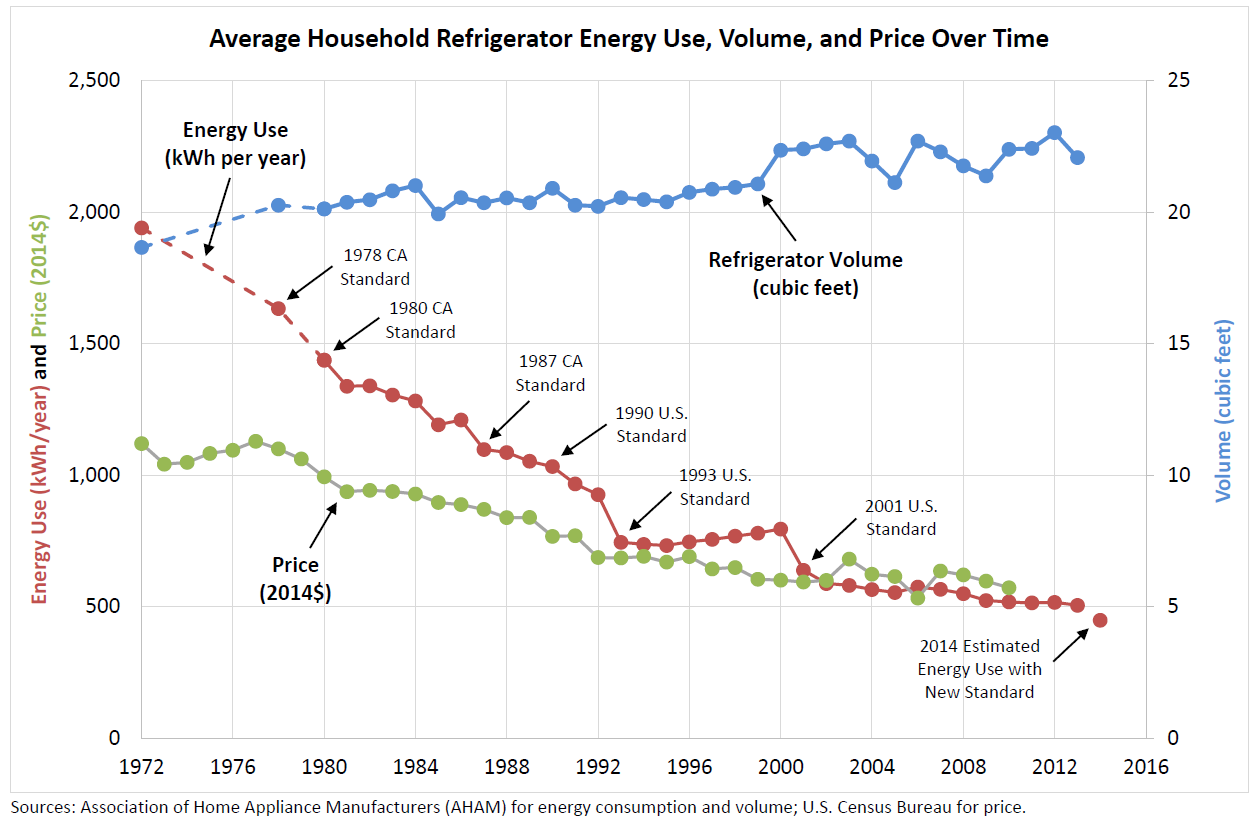Expert Opinion on the Impact of DOE/EERE BTO Investments - Federal Natl. Laboratories
Impact Evaluation of HVAC, Water-Heating, and Appliance Technologies R&D Program
Advanced Refrigeration 2016.11.07
Expert Opinion on the Impact of DOE/EERE BTO Investments - Federal Natl. Laboratories
OMB: 1910-5186
OMB Control No. 1910-NEW
Exp. Date XX/XX/XXXX
Interview Guide: DOE/EERE Building Technologies Office Economic Impact Study
Advanced Refrigeration Research
The U.S. Department of Energy has contracted with RTI International to study the impact of Building Technologies Office research and development (R&D) investments and ancillary activities. This survey looks specifically at the impact of the Advanced Refrigeration R&D activities supported by DOE.
Your perspective will help guide DOE’s planning and investment process. Participation in this study is confidential; only aggregated information will be included in any deliverables or communications. Your name and your company’s/organization’s name will not be disclosed.
Our research products will be an economic analysis, final report, and presentation materials. All deliverables will be publicly available in late summer 2017, and these will be shared with you as soon as they are released.
Throughout the survey, we will be seeking both qualitative and quantitative information. Quantitative information may be rough approximations based on your experience, but this data is important for us to aggregate the responses of all the survey participants in a meaningful way.
If you have questions, please contact:
Troy Scott, RTI Project Manager, 503-428-5680 or [email protected]
Zack Oliver, Data Collection Lead, 919-541-8911 or [email protected]
Antonio Bouza, DOE Project Officer, 202-586-4563 or [email protected]
John Mayernik, Evaluation Advisor, 202-448-2209 or [email protected]
Paperwork Reduction Act Burden Disclosure Statement This data is being collected to evaluate DOE Office of Energy Efficiency and Renewable Energy (EERE) Building Technologies Office R&D investments. The data you supply will be used for estimating the economic benefits and costs of R&D investments. Public reporting burden for this collection of information is estimated to average 60 minutes per response, including the time for reviewing instructions, searching existing data sources, gathering and maintaining the data needed, and completing and reviewing the collection of information. Send comments regarding this burden estimate or any other aspect of this collection of information, including suggestions for reducing this burden, to Office of the Chief Information Officer, Records & Privacy Management Division, IM-23, Paperwork Reduction Project 1910-NEW, U.S. Department of Energy, 1000 Independence Ave SW, Washington, DC, 20585-1290; and to the Office of Management and Budget (OMB), OIRA, Paperwork Reduction Project 1910-NEW, Washington, DC 20503. Notwithstanding any other provision of the law, no person is required to respond to, nor shall any person be subject to a penalty for failure to comply with a collection of information subject to the requirements of the Paperwork Reduction Act unless that collection of information displays a currently valid OMB control number. Submission of this data is voluntary. |
Background on Advanced Refrigeration Technology
Figure 1 below lists DOE research activities along with other activities that were happening during the same time frame. Figure 2 displays these activities on a visual timeline. We will ask about the impact of DOE funded activities on private sector R&D costs, product costs, and performance, among other things. Figure 3a and Figure 3b show sales-weighted average efficiency of residential refrigerators along with the timing of state and federal efficiency standards.
Figure 1: Factors Influencing Refrigeration Efficiency in the U.S.
|
Figure 2: Timing of Policies, Ongoing Events, and Standards


Figure 3 – Average Energy Use per Unit per Year
Figure 3a – 1947 to 2001
Source: National Academy of Sciences. 2001. “Energy Research at DOE: Was It Worth It? Energy Efficiency and Fossil Energy Research 1978 to 2000.”
Figure 3b – 1972 to 2014
Source: Appliance Standards Awareness Project, 2015 |
SECTION I. Respondent Background
Which of the following best describes your background in relation to advanced refrigeration research & development? Check all that apply.
☐ Worked for a manufacturer that conducted research/testing/other technical efforts
__ Refrigerator manufacturer
__ Other: _____________________
☐ Led public-private collaboration on technical efforts
☐ Participated in public-private collaboration on technical efforts
☐ Led industry-only technical efforts for a manufacturer
☐ Participated in industry-only technical efforts
☐ Employed in a federal agency or research lab
☐ Employed in a state energy office
☐ Worked for a trade association
☐ Worked for a university or research institute
☐ Worked for an electric utility
☐ Other: ____________________________
Please give a brief description of your background:
Were you involved in or familiar with any of the following programs/activities related to advanced refrigeration? Check all that apply.
-
Directly Involved
Very Familiar
Somewhat Familiar
Development of a compressor by Columbus Products, under subcontract to ORNL
R&D at ORNL on multiple unequal parallel compressors
Collaboration on an advanced supermarket refrigeration system between ORNL and Foster-Miller Associates, H. E. Butt Grocery, and Friedrich Commercial Refrigeration
Development of a commercial refrigerator with National Energy Technology Laboratory, A.D. Little, and Delfield
CRADA with the Appliance Industry-Government CFC Replacement Consortium
Other
Please give a brief description:
Have you ever received DOE funding for your work or participated in collaborative R&D activities with a DOE-funded laboratory such as Oak Ridge National Laboratory or the National Energy Technology Laboratory?
☐ No
☐ Yes. Please give a brief description:
Have you been involved in commercial R&D related to refrigeration in the past 15 years?
No (please skip down to Section III)
Yes
SECTION II. This next set of questions pertains to DOE’s involvement in and impact on the research and development activities related to advanced refrigeration technology that you were involved in. We will be asking you to quantify these impacts to the best of your ability.
Ask
these questions if the respondent answered Yes to Question 4.
We are trying to isolate the impact of DOE R&D investments and activities as much as possible, and this poses some challenges. For example, efficiency standards affect companies’ incentives to perform R&D and commercialize more efficient refrigeration systems, and the DOE R&D activities we are focused on have indirect effects on the evolution of standards. Similarly, EnergyGuide labeling, ENERGY STAR qualification and rebates rely on test methods linked to DOE R&D activities.
Therefore, if we were to hold fixed the exact timeline of these factors (for instance, the timing of updates to standards) we would be assuming away a part of the impact we are trying to estimate. What we would like to try to do instead is to think about holding constant the environment—the institutional frameworks—in which standards, labeling, and subsidies evolve, and consider what would happen without the DOE R&D-related activities and investments described in Question 5:
In what ways has your R&D work on refrigeration been influenced by DOE?
Provide a number from 0 to 3 (0 = DOE did not contribute in this way; 1 = minimal DOE contribution; 2 = moderate DOE contribution; 3 = major DOE contribution).
______Through DOE’s contributions to the knowledge base on which R&D work drew (e.g., formal science literature, conference presentations and discussions, patents, knowledge and training of yourself and your colleagues)
______Through access to scientific and engineering data produced by DOE laboratories
______Through the licensing/transfer of technology that DOE helped to develop
______Through consultations with DOE scientists and engineers
______Through access to DOE laboratory facilities
______Through equipment/component testing performed at DOE laboratories
______Through direct R&D funding from DOE
______Other: _______________________________
DOE had no influence (please skip down to question 8)
Please give a brief description of DOE influences:
Would your R&D work on refrigeration have been undertaken without the DOE factors identified above? (please select the most likely scenario)
The work would not have been undertaken
At least some of the work would still have been undertaken, but the effort levels, costs, timelines, and/or outcomes would have been different
The work would still have been undertaken, without significant difference in effort levels, costs, timelines, or outcomes (please skip down to question 8)
Please give a brief description of how effort levels, costs, timelines, and/or outcomes would have been different (or why the work would not have been undertaken). (Note: If the work would not have been undertaken at all, please skip down to question 8):
Without the DOE factors identified above:
The level of effort, in terms of research personnel years, would have been
_____________ research personnel years [ MORE LESS] (a range is fine).
OR ______________ % [ MORE LESS] (a range is fine).
The cost of the work would have been
$_____________ x1000 $ [ MORE LESS] (a range is fine).
OR ______________ % [ MORE LESS] (a range is fine).
To reach the same outcomes (in terms of energy efficiency and other performance attributes) would have taken
________________ calendar years [ MORE LESS] (a range is fine).
OR ______________ % [ MORE LESS] (a range is fine).
If any of the DOE factors identified in question 5 were especially important for one or more of these impacts, please give a short explanation:
What were the technical outcomes of your R&D work? Where possible, please provide the baseline parameter and improved parameter (e.g., pre and post energy efficiency, or pre and post equipment cost).
Improvements in energy efficiency
Please describe:
Improvements in other performance attributes
Please describe:
Improvements in equipment cost for which these levels of energy efficiency or other performance attributes could be achieved
Please describe and include cost savings:
If DOE factors identified above had any impact on these outcomes, what was the DOE effect in terms of the proportion of the improvements you view were attributable to DOE activities?
Improvements in Energy Efficiency |
Improvements in performance attributes |
Improvements in equipment costs |
|
Less than 10% |
Less than 10% |
Less than 10% |
|
Between 10-24% |
Between 10-24% |
Between 10-24% |
|
Between 25-49% |
Between 25-49% |
Between 25-49% |
|
Between 50-75% |
Between 50-75% |
Between 50-75% |
|
Greater than 75% |
Greater than 75% |
Greater than 75% |
|
Please give a short explanation of your reasoning. Please note if any of the DOE factors checked above were especially important for one or more of these impacts:
Was a new product commercialized as a result of this R&D work?
No (please skip down to Section III)
Yes
Without the DOE factors identified in question 5, taking into account the impacts on energy efficiency, other performance attributes, and equipment cost described above:
How likely is it that your company would have commercialized the product in the same time frame (please select one)?
No chance the product would have been commercialized.
0% to 25% chance
25% to 50% chance
50% to 75% chance
75% to 100% chance
The product would have been commercialized in the same time frame without the DOE factors identified above.
If your company had commercialized the product without the DOE factors identified above, how would its sales volume today compare with that of the product actually commercialized?
No difference in sales (i.e., any difference in price, energy efficiency, and performance attributes would have negligible effect on sales)
Sales would have been lower by roughly _________% (a range is fine).
Sales would have been higher by roughly_________% (a range is fine).
Please give a short explanation of your reasoning:
(Respondents answering Section II questions skip to Section IV)
SECTION III. This next set of questions pertains to your opinion of DOE’s influence on the market and industry trends for refrigeration systems in general.
We are trying to isolate the impact of DOE R&D investments and activities as much as possible, and this poses some challenges. For example, efficiency standards affect companies’ incentives to perform R&D and commercialize more efficient refrigeration systems, and the DOE R&D activities we are focused on have indirect effects on the evolution of standards. Similarly, EnergyGuide labeling, ENERGY STAR qualification and rebates rely on test methods linked to DOE R&D activities.
Therefore, if we were to hold fixed the exact timeline of these factors (for instance, the timing of updates to standards) we would be assuming away a part of the impact we are trying to estimate. What we would like to try to do instead is to think about holding constant the environment—the institutional frameworks—in which standards, labeling, and subsidies evolve, and consider what would happen without the DOE R&D-related activities and investments described in Question 12:
How did DOE impact the commercial R&D (performed in the last 15 years) necessary for companies to bring more energy-efficient refrigeration systems to market?
Provide a number from 0 to 3 (0 = DOE did not contribute in this way; 1 = minimal DOE contribution; 2 = moderate DOE contribution; 3 = major DOE contribution).
______Through DOE’s contributions to the knowledge base on which R&D work drew (e.g., formal science literature, conference presentations and discussions, patents, knowledge and training of yourself and your colleagues)
______Through access to scientific and engineering data produced by DOE laboratories
______Through the licensing/transfer of technology that DOE helped to develop
______Through consultations with DOE scientists and engineers
______Through access to DOE laboratory facilities
______Through equipment/component testing performed at DOE laboratories
______Through direct R&D funding from DOE
______Other: _______________________________
______DOE had no influence (please skip down to question 15)
Please give a brief description of DOE influences:
Without the DOE impacts discussed in Question 12, would the commercial R&D necessary to bring more energy-efficient refrigeration systems to market still have been undertaken within the same time frame?
The commercial R&D would not have been undertaken.
At least some of the commercial R&D would still have been undertaken, but the effort levels, costs, timelines, and/or outcomes would have been different.
The commercial R&D would still have been undertaken, without significant difference in effort levels, costs, timelines, or outcomes.
Please give a brief explanation:
Given your answers to Question 13, how would the market for refrigeration systems look different than it does today without the DOE impacts discussed above?
Average energy use would be: higher
lower
by roughly _____________ %.
Average price would be: higher
lower
by roughly _____________ %.
Average sales volume would be: higher
lower
by roughly _____________ %.
There would be no difference (the market would be exactly as it is today).
Please give a brief explanation:
Section IV. Additional Comments
Are there any additional comments you would like to share?
Respondent Contact Information (optional)
Name: _______________________________________________________________________________
Title: ________________________________________________________________________________
Division: _____________________________________________________________________________
Company/Organization: _________________________________________________________________
Location, if not USA: ____________________________________________________________________
Would you be willing to be contacted for a brief follow-up discussion of your responses to this survey?
Yes, by phone ______________________
Yes, by email ______________________
No
THANK YOU for contributing your time and insight to the study.
Page
| File Type | application/vnd.openxmlformats-officedocument.wordprocessingml.document |
| File Title | Month 200X |
| Author | Cannada |
| File Modified | 0000-00-00 |
| File Created | 2021-01-24 |
© 2025 OMB.report | Privacy Policy

